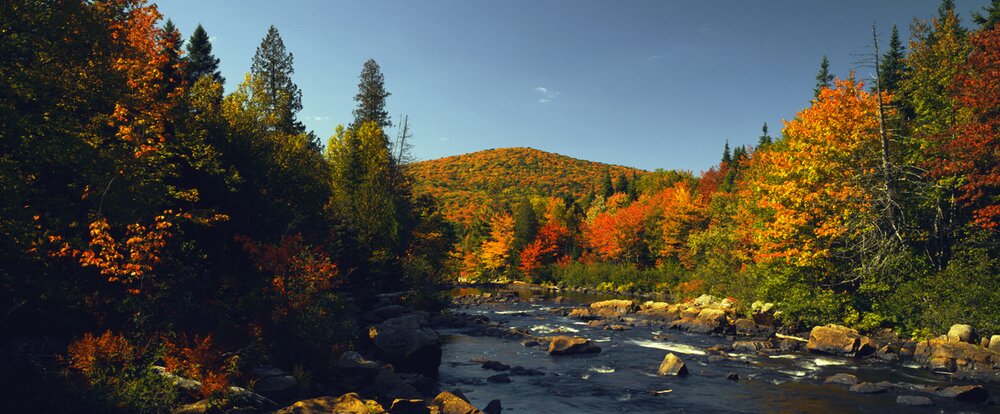Published by Sustainable Kingston (https://www.sustainablekingston.com/blog/green-burials-a-sustainable-and-deeply-personal-alternative) on July 7, 2022. They also publshed a Podcast at the same time: https://www.sustainablekingston.com/podcast
I like liminal spaces - hallways, train stations, doorways - my favourite thresholds between worlds. My vocation is the funeral profession, a waystation if there ever was one.
Lots of people are not keen about death: the talking about it, the facing it when it happens, the strong likelihood that it will happen to us. As many of us are green-aware these days, it's critical to ask how the funeral business impacts the environment, since when we care about the environment, we care about all aspects of our impact on the planet. Before getting to the environmental science, it helps to be able to talk about death.
Each human being has feelings about death. At eight years old I had a circular conversation with myself while sitting on the chest freezer in our mud room: ‘I’m going to die one day.’ A spreading feeling of fear caused panic. ‘No I’m not, that’s not true.’ A reassuring calm took over and I took a deep breath, kicked my sandaled feet against the firm white side of the freezer. Then a thought like a weight returned: ‘I am going to die. We all do. I can’t get out of it.’ My stomach loosened and I felt the fear creep all through me. ‘No no, that’s not true. You won’t die.’ Better, I sighed until the next realization slammed me. This went round and round several more times. Nothing was resolved. I was now aware of my own fear of death.
I talk freely about my work which unintentionally draws comments from my listeners. We talk about such things as decay of the body after death, if seeing a person dead helps you believe that they’re dead, that embalming means replacing the blood with a liquid preservative and it’s not mandatory but can be helpful if burial must wait several days and viewing is desired. Increasingly, people ask, “what is Green Burial”?
Green Burial is a practice to enhance our environment at our death. For a long time in Canada, most bodies went back to the earth through burial, “dust to dust, ashes to ashes.” When embalming became possible, something settlers did if they could afford it in the 19th century, and when metal caskets and grave liners made of concrete became the next luxuries in the 20th century, bodies stopped becoming dust within a matter of years, in favour of being preserved. Few questioned their environmental impact.
Green Burial reverses these trends by having the body unembalmed, shrouded or put in a biodegradable casket, buried in a more shallow grave (which promotes decomposition and is still deep enough that wild animals will not dig for it), laid in an area marked, but not individually memorialized by monuments, and the ground kept free from pesticides, planted with indigenous plants and trees If you’ve made a commitment to care for the environment, as I have, then we care how to best treat our bodies and nature at death.
For me, growing up helped curb my fear of death. Learning that it wasn’t just me softened my fear of death. Most children I have known shudder going by cemeteries. Some, like my own child, hate everything to do with death. Children haven’t learned to hide their souls. Our child-like selves would agree that there is something deeply disagreeable about death. It is not the way things are supposed to be.
Meeting people who believed, for different reasons, that death could be accepted, helped. There were the leaders at my Confirmation who had a story for what happens at death that was normal to them even if it involved unseen things like heaven. There was the friend of my mother’s who expressed her grief over her father’s death openly, crying over camomile tea. Sadness was a bit scary too, but she said it was the Circle of Life. She grew lots of flowers, laughed at mistakes, and was generally a welcoming adult to me, so I felt reassured.
I did grow up to believe in the Christian worldview for myself as an older teenager and it largely wiped my brain of the fear of death. I was able to sit with the dying and research the denial of death during my Bachelor of Social Work at McGill. I read countless deaths from consumption in Victorian novels during my Masters in English Literature. I listened and supported the bereaved in the After Care program of my family funeral home (James Reid’s in Kingston). These have all increased my capacity to be non-awkward around death. I have met others who are comfortable in the liminal space of death and found being comfortable really helps to make good choices.
Such as Green Burial. Please consider becoming a member at greenburialkingston.com, and please consider planning for your own green burial at https://jamesreidfuneralhome.com/223/Green-Burial.html.
Sarah Reid is fifth generation at her family funeral home, James Reid Funeral Home, Crematorium & Reception Centre in Kingston Ontario. She brings her commitment to the environment to the work and with her colleagues promotes Green Burials, which is how burials were done 168 years ago when James Reid’s started.






Comments